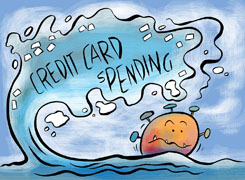Ramalingam Kalirajan |10881 Answers |Ask -Follow
Mutual Funds, Financial Planning Expert - Answered on May 24, 2024
He has an MBA in finance from the University of Madras and is a certified financial planner.
He is the director and chief financial planner at Holistic Investment, a Chennai-based firm that offers financial planning and wealth management advice.... more

Sir, Iam 44 years old ,employed in pvt company and earning 1.8L / Month + rental income of 23K/Month. I Have 2 Kids - 13 and 10 yr old.I invest currently Rs 22000/Month via SIP in various MFs , 50000/annum in NPS & PPF .I have home loan outstanding of 57 L for which i pay EMI of Rs 69,000 / Month. My other monthly expenses come to Rs 94,000.I have a corpus of Rs 30 L in various instruments.Pls advice on how i can pay my debt faster and still make funds available for college education, retirements etc.
Your dedication to financial stability and providing for your family's future is commendable. Let's outline a comprehensive plan to accelerate debt repayment while securing funds for your children's education and your retirement.
Understanding Your Financial Situation
Your monthly income of Rs. 1.8 lakh along with rental income provides a solid foundation.
Despite existing debt and expenses, your disciplined approach to investing via SIPs, NPS, and PPF is impressive.
Assessing Debt Repayment Strategy
Home Loan
Your outstanding home loan of Rs. 57 lakh with an EMI of Rs. 69,000 is a significant liability.
Paying off this debt faster will free up substantial funds for other goals.
Debt Repayment Priority
Prioritize debt repayment to minimize interest costs and achieve financial freedom sooner.
Optimizing Debt Repayment and Investments
Debt Snowball or Avalanche Method
Consider using the debt snowball or avalanche method for faster debt repayment.
Snowball focuses on paying off the smallest debts first, while avalanche tackles high-interest debts.
Utilizing Corpus
Utilize a portion of your Rs. 30 lakh corpus to make a lump-sum payment towards your home loan.
This reduces the principal amount, leading to lower interest payments over time.
Refinancing Options
Explore refinancing options to secure lower interest rates on your home loan.
Lower interest rates can significantly reduce your EMI burden and accelerate debt repayment.
Allocating Funds for Future Goals
Children's Education
Allocate a portion of your monthly surplus towards building an education fund for your children.
Consider investing in mutual funds or education-specific investment vehicles to grow these funds.
Retirement Planning
Continue contributing to NPS and PPF for retirement planning.
Maximize tax benefits while securing a stable retirement income.
Reviewing and Adjusting Financial Plan
Regular Review
Periodically review your financial plan to track progress and make necessary adjustments.
Evaluate debt repayment milestones and investment performance.
Adjusting Investments
As debt decreases, allocate more funds towards investments for future goals.
Increase SIP amounts and explore additional investment avenues for diversification.
Benefits of Regular Funds Investing through MFD with CFP Credential
Disadvantages of Direct Funds
Direct funds require active management and market knowledge.
Investors may lack expertise in fund selection and portfolio management.
Benefits of Regular Funds Investing through MFD with CFP Credential
Working with a Certified Financial Planner (CFP) ensures personalized guidance and expert advice.
MFDs provide tailored investment strategies aligned with your financial goals and risk profile.
Conclusion
By prioritizing debt repayment and optimizing investments, you can achieve financial freedom while securing your family's future.
Utilize strategies like lump-sum payments, refinancing, and disciplined investing to expedite debt repayment and build wealth.
Consulting a Certified Financial Planner will provide tailored solutions to navigate your financial journey successfully.
Best Regards,
K. Ramalingam, MBA, CFP,
Chief Financial Planner,
www.holisticinvestment.in
You may like to see similar questions and answers below
Ramalingam Kalirajan |10881 Answers |Ask -Follow
Mutual Funds, Financial Planning Expert - Answered on Aug 30, 2024
Ramalingam Kalirajan |10881 Answers |Ask -Follow
Mutual Funds, Financial Planning Expert - Answered on Jul 02, 2024
Milind Vadjikar | Answer |Ask -Follow
Insurance, Stocks, MF, PF Expert - Answered on Nov 06, 2024
Samraat Jadhav |2507 Answers |Ask -Follow
Stock Market Expert - Answered on Jul 11, 2025
Kanchan Rai |646 Answers |Ask -Follow
Relationships Expert, Mind Coach - Answered on Dec 12, 2025
Ravi Mittal |677 Answers |Ask -Follow
Dating, Relationships Expert - Answered on Dec 12, 2025
Ramalingam Kalirajan |10881 Answers |Ask -Follow
Mutual Funds, Financial Planning Expert - Answered on Dec 12, 2025
Ramalingam Kalirajan |10881 Answers |Ask -Follow
Mutual Funds, Financial Planning Expert - Answered on Dec 12, 2025
Reetika Sharma |423 Answers |Ask -Follow
Financial Planner, MF and Insurance Expert - Answered on Dec 12, 2025
Reetika Sharma |423 Answers |Ask -Follow
Financial Planner, MF and Insurance Expert - Answered on Dec 12, 2025
Reetika Sharma |423 Answers |Ask -Follow
Financial Planner, MF and Insurance Expert - Answered on Dec 12, 2025
Reetika Sharma |423 Answers |Ask -Follow
Financial Planner, MF and Insurance Expert - Answered on Dec 12, 2025
Reetika Sharma |423 Answers |Ask -Follow
Financial Planner, MF and Insurance Expert - Answered on Dec 12, 2025
Mayank Chandel |2572 Answers |Ask -Follow
IIT-JEE, NEET-UG, SAT, CLAT, CA, CS Exam Expert - Answered on Dec 11, 2025


























